
The Douglas Mansion at 128 West 14th Street. Printed in Winifred E. Howe, A History of the Metropolitan Museum of Art (New York: The Metropolitan Museum of Art, 1913), 163.
«One hundred and forty years ago today, on March 1, 1873, The Metropolitan Museum of Art signed a lease for the Douglas Mansion, located at 128 West 14th Street in Manhattan. The rapidly expanding museum had outgrown its original location in the Dodworth Building in midtown and was in need of additional gallery space.» (See "This Weekend in Met History: February 20.") The Museum's second home on West 14th Street was to be its base for the next six years, until 1879, while a permanent structure at the Museum's current location in Central Park was under construction.
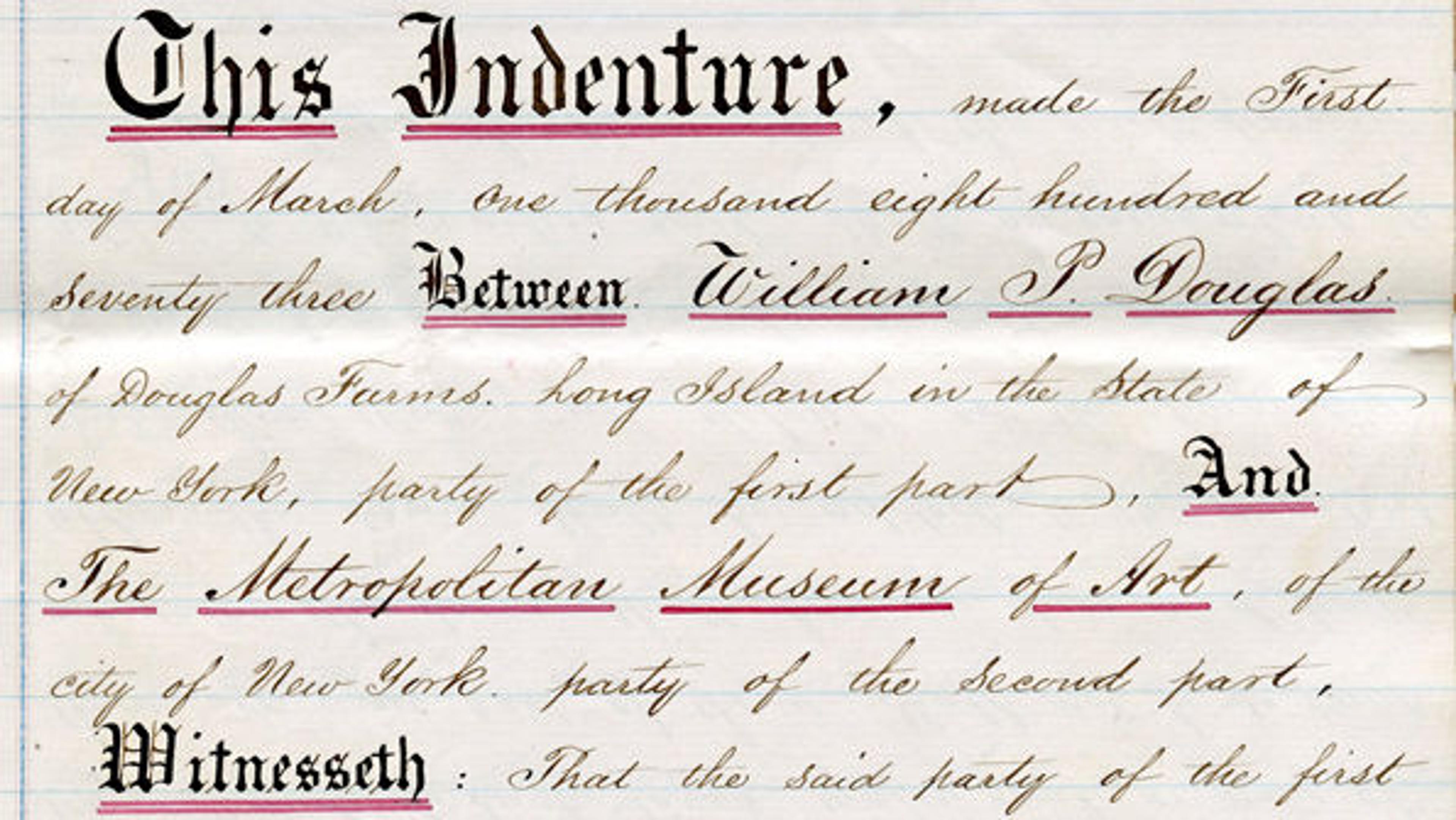
Detail of the lease for the property, signed by William P. Douglas and The Metropolitan Museum of Art. Office of the Secretary Records, The Metropolitan Museum of Art Archives. View the full lease.
The Douglas Mansion, also known as the Cruger House and the Douglas-Cruger Mansion, was built in the early 1850s by Harriet Douglas Cruger, the daughter of a wealthy New York merchant. When she died in 1872, her nephew, William P. Douglas, decided to rent the property. At this time, the Museum's space constraints were preventing Museum Trustees from exhibiting artworks loaned from prominent New York collectors. In addition, the recently acquired collection of Cypriot objects from the American consul in Cyprus, Luigi Palma di Cesnola, could not be housed in the Dodworth Building, which made the move even more imperative. The Trustees jumped at the chance to move into the vacant mansion, signing a five-year lease for an annual rent of $8,000, which they later renewed for an additional year.[1]
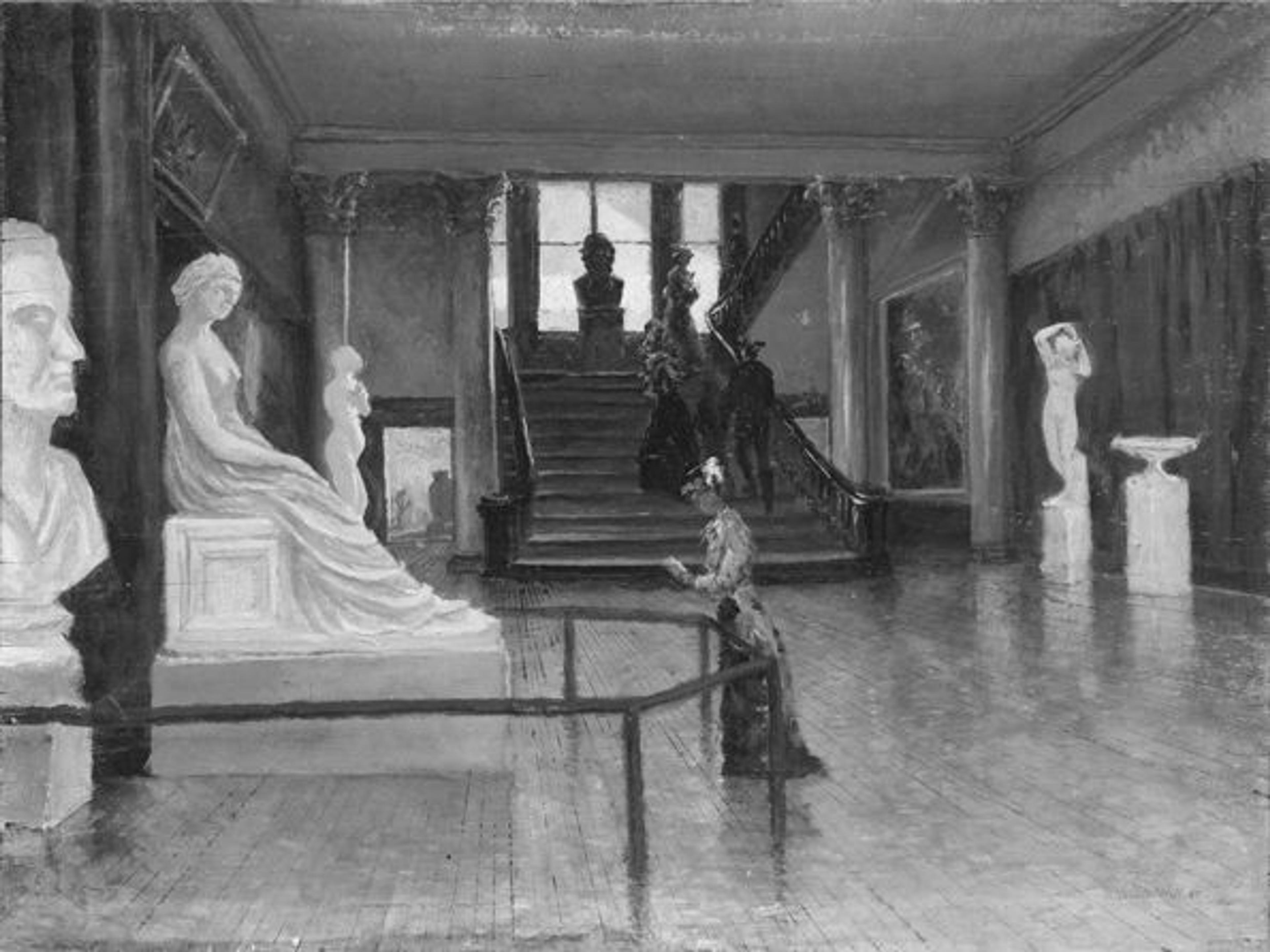
Frank Waller (American, 1842–1923). Entrance Hall of the Metropolitan Museum of Art when in Fourteenth Street, ca. 1881. Oil on wood; 12 x 16 in. (30.5 x 40.6 cm). The Metropolitan Museum of Art, New York, Purchase, 1920 (20.77)
The Museum's Annual Report enthusiastically described the building as follows:
This is a large building, measuring seventy-five feet front, by eighty-five feet deep, and capable, with a few alterations, of displaying to advantage not only their present collection, but also the antiquities from Cyprus and such other objects as they may desire to obtain for a loan-exhibition. It is near enough to important thoroughfares to be easily accessible, and is surrounded by spacious grounds, with a frontage of 225 feet on Fourteenth Street, upon which grounds new galleries may be built, should they be required, before the final settlement in Central Park. The main house is substantial and elegant in its external appearance; and the halls, apartments and staircases are large and amply lighted. There is a well-built coach-house near the house, which can easily be converted into a picture-gallery of about the same dimensions with the old one. The mansion itself contains a gallery lighted from the roof; and the whole establishment will afford, if necessary, five times as much wall space as is supplied by the present building in Fifth Avenue.[2]

Drawing of the main staircase in the Douglas Mansion by Frank Waller. Printed in Howe, 160.
The first loan exhibition held at the Douglas Mansion opened in September 1873. The exhibition catalogue contained 112 entries from thirty-two different lenders and included paintings by such artists as Joseph Mallord William Turner (1775–1851), James McNeill Whistler (1834–1903), and Jacopo Tintoretto (1518–1594).
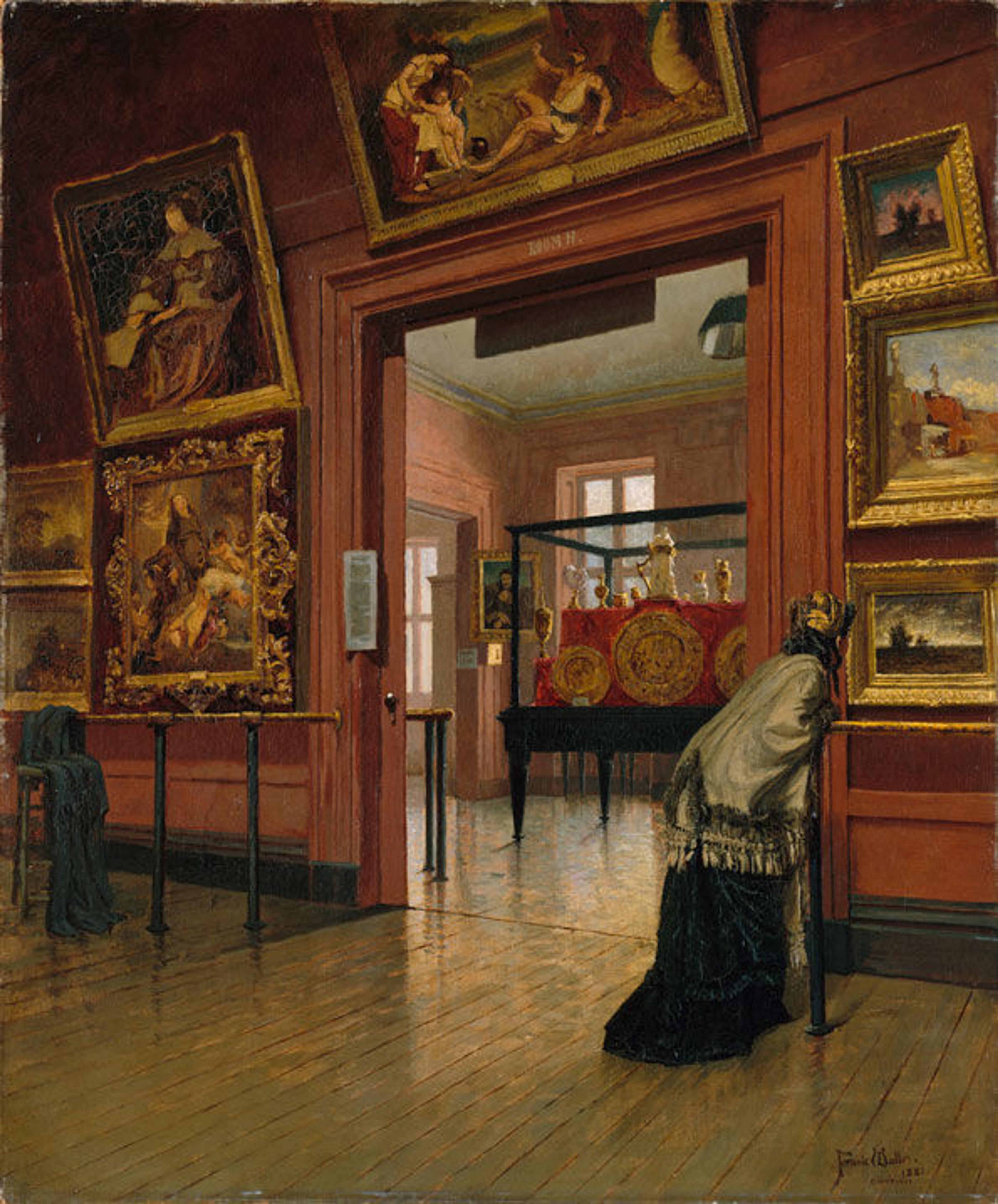
Frank Waller (American, 1842–1923). Interior View of the Metropolitan Museum of Art when in Fourteenth Street, 1881. Oil on canvas; 24 x 20 in. (61 x 50.8 cm). The Metropolitan Museum of Art, New York, Purchase, 1895 (95.29)
Although the Museum had made some alterations to the structure with the landlord's consent, the Douglas Mansion suffered from insufficient heating. Writing to Theodore Roosevelt, father of the future president of the United States and chairman of the Museum's building committee, Assistant Superintendent H. Gordon Hutchins complained:
We are not having many visitors just now and I think that one great reason is the fact that it is known that the building is so cold. The few people who do come have a great deal to say, they go away and tell their friends, in this way it is known all over the city – in fact I have myself heard ladies and gentlemen talking about it in the street cars.[3]
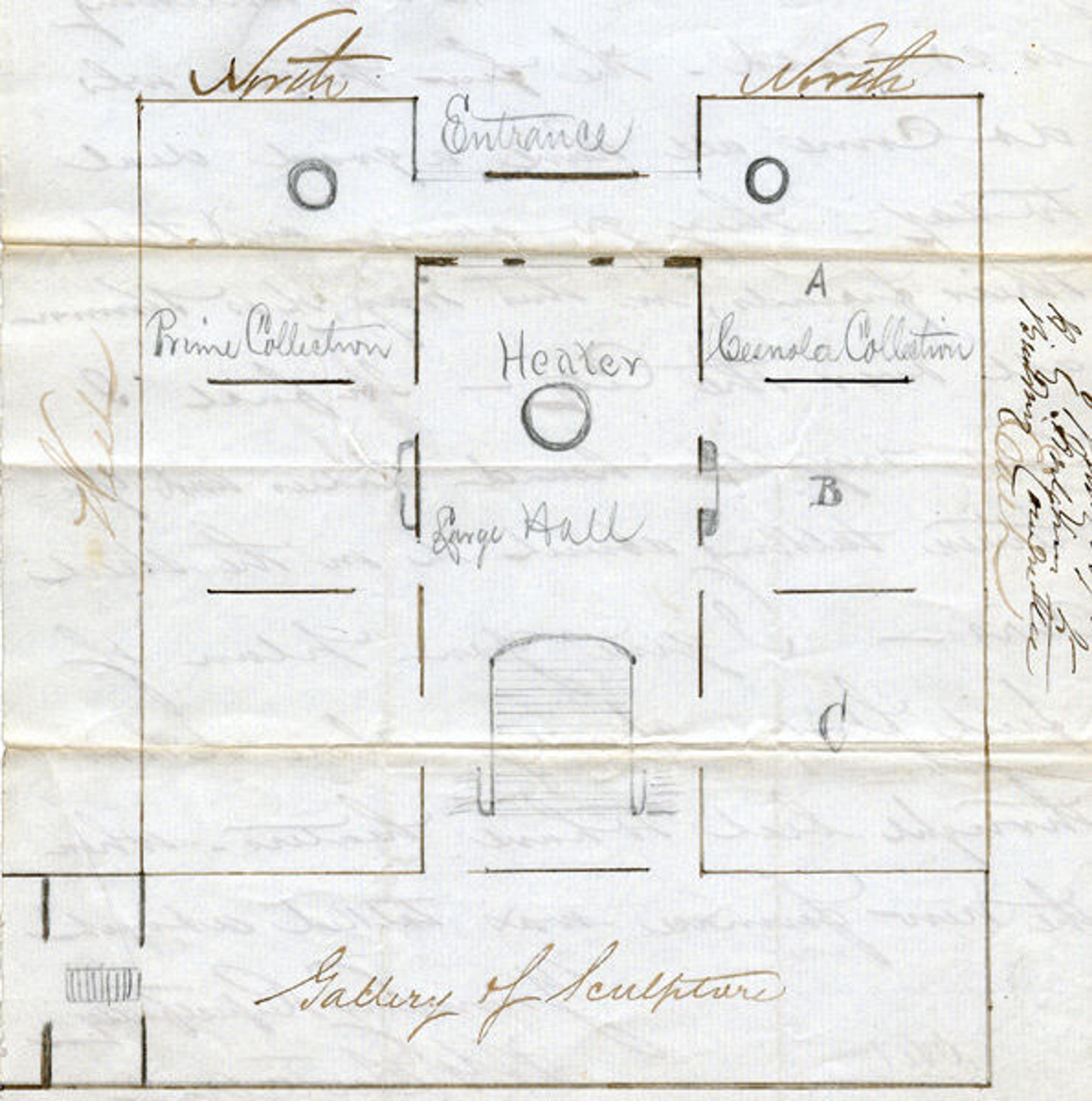
Plan of the first floor of the Douglas Mansion. Office of the Secretary Records, The Metropolitan Museum of Art Archives
Museum Trustees hosted a closing reception at the Douglas Mansion on February 14, 1879, and the Metropolitan's art collection was moved to its nearly finished building in Central Park soon after. The Douglas Mansion later housed a training school for the Salvation Army and was destroyed by fire in 1918.
Full lease for the property, signed by William P. Douglas and The Metropolitan Museum of Art (Office of the Secretary Records, The Metropolitan Museum of Art Archives):

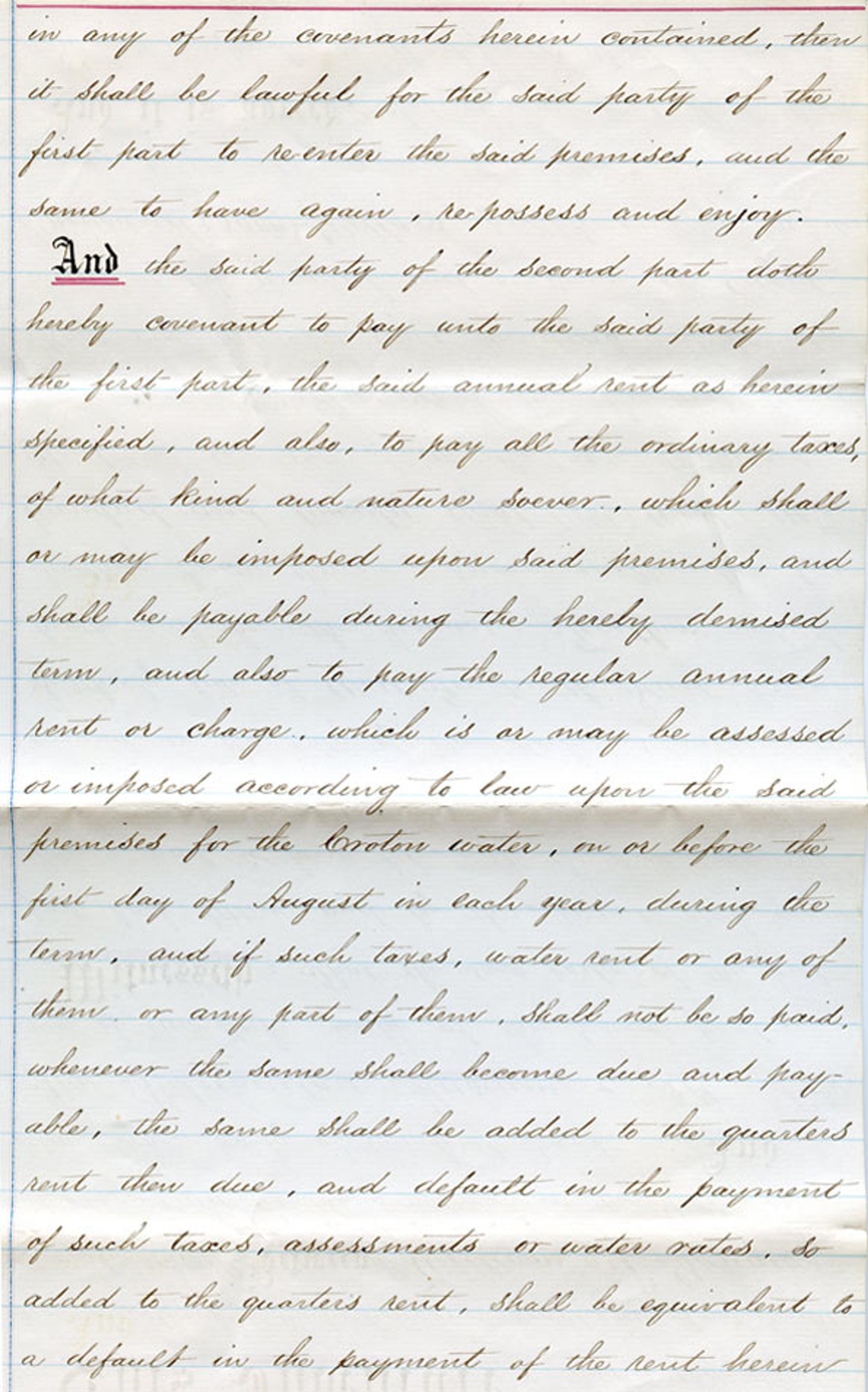
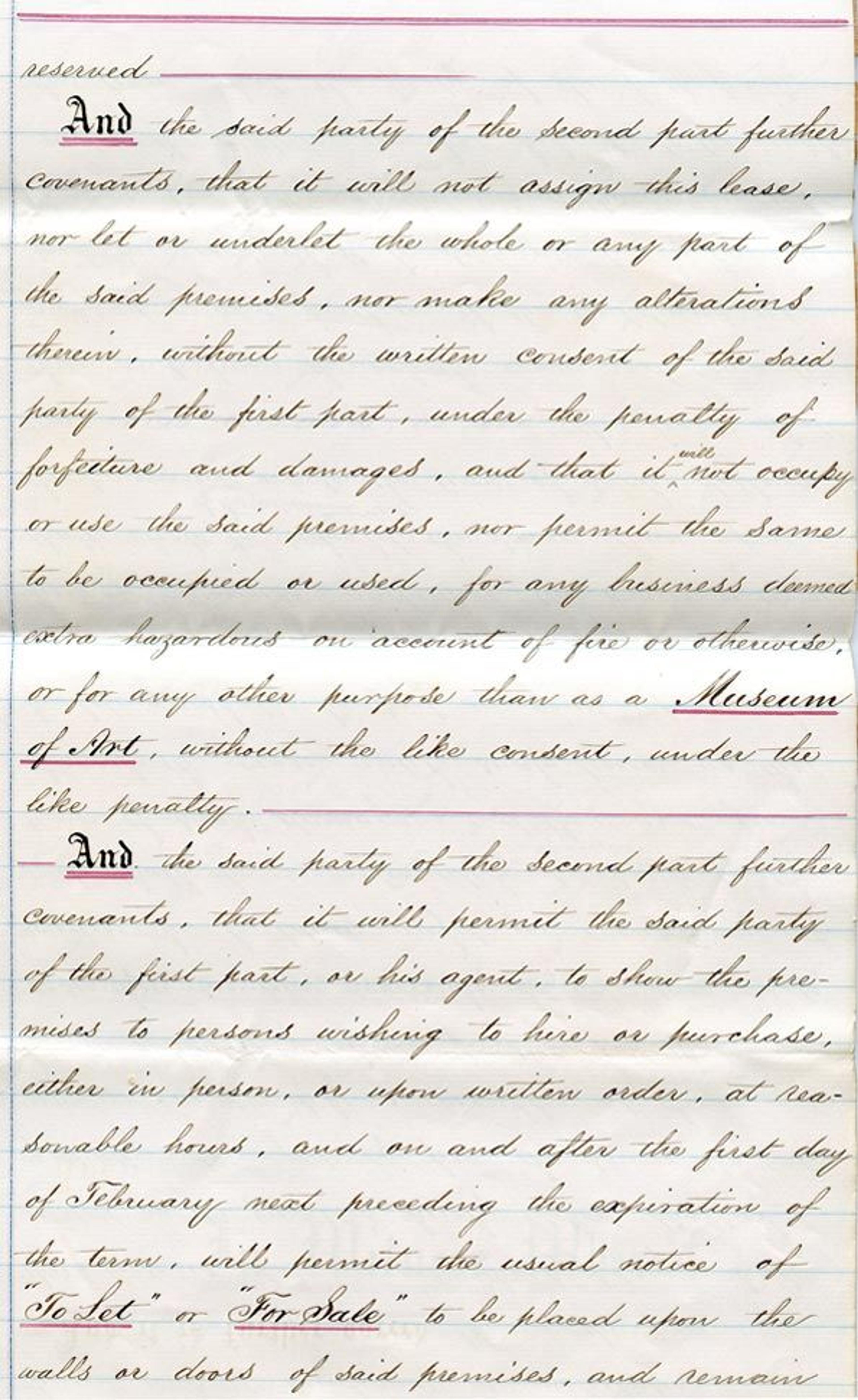

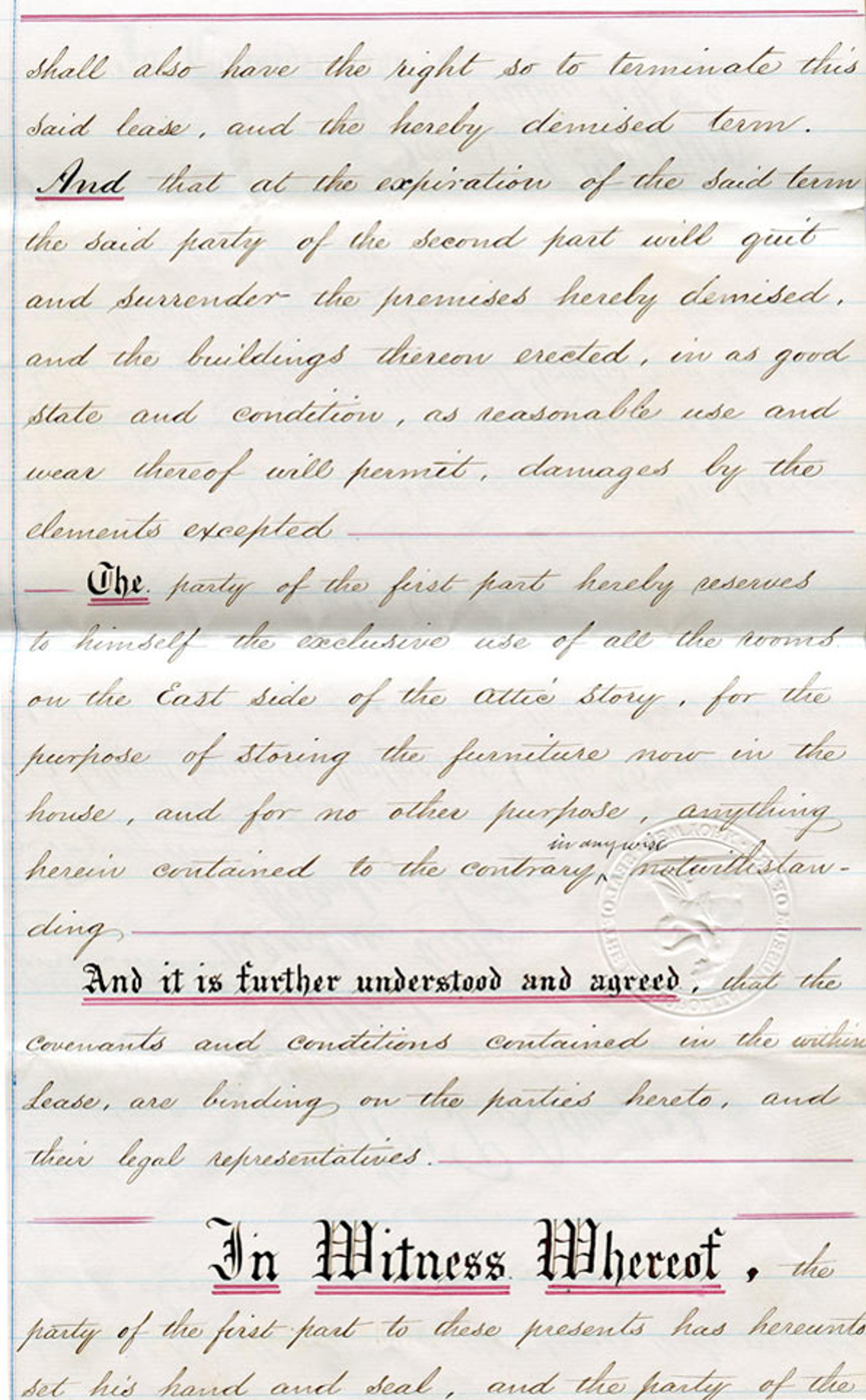

Footnotes
[1] Winifred E. Howe, A History of the Metropolitan Museum of Art (New York: The Metropolitan Museum of Art, 1913), 171. The full text is available in the Metropolitan Museum's Watson Library Digital Collections.
[2] Annual Report of the Trustees of the Metropolitan Museum of Art, No. 3 (1873) (New York: The Metropolitan Museum of Art, 1871–present), 37–38. The full text is available on JSTOR.
[3] Letter from H. Gordon Hutchins to Theodore Roosevelt, January 8, 1875, Office of the Secretary Records, The Metropolitan Museum of Art Archives.